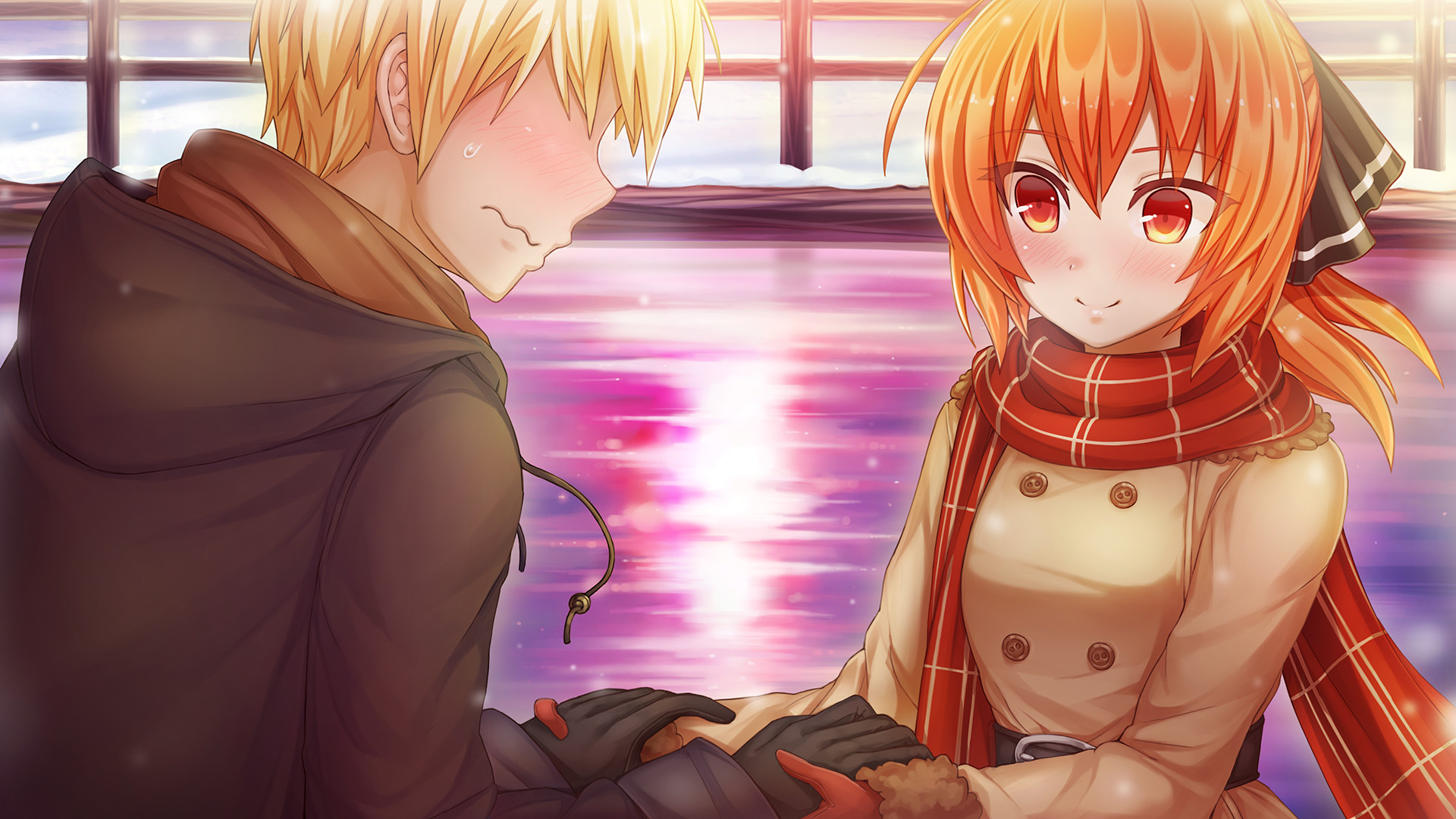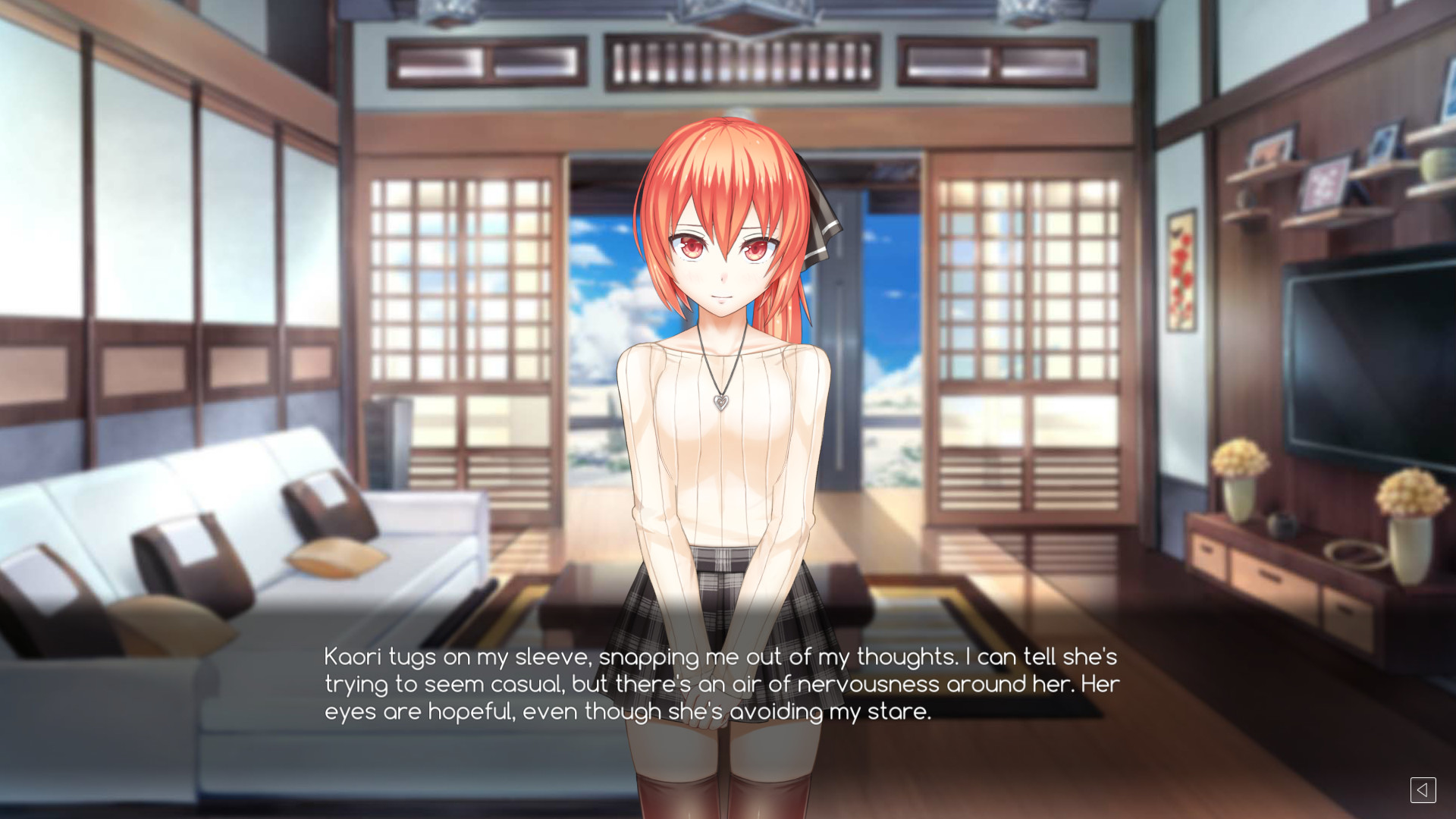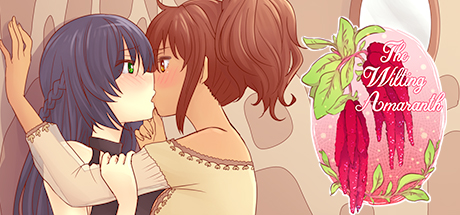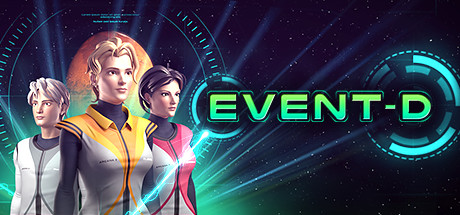A while ago I’ve made a Shovelware Adventures episode about NewWestGames, a one-person studio from Canada creating primarily erotic yuri titles. For the first time since I’ve started doing my semi-serious (and borderline mockery) short reviews, I was actually approached by the developer and had an opportunity to discuss my criticism of their games, in a respectful and constructive manner, that was probably way more forgiving than the tone of my original post would warrant. After a brief exchange, I proposed to take this discussion public, giving Katie, the person behind the NewWestGames label, a chance to respond to my commentary on her work and talk a bit about the general ideas behind her VNs. I also decided it was a good moment to take a look at the NWG titles I haven’t reviewed before, completing my coverage of the studio’s catalogue and giving Katie the ability to comment on it in full. So, without further ado, I hope you’ll all enjoy my reviews and the conversation that comes after them!

Frequent Flyer, released on Steam in March 2018, went unnoticed by most EVN readers and received mixed reviews, mostly due to its simplistic visuals and a relatively brief, linear storyline. It is, however, arguably one of the most interesting NewWestGames titles, telling a story about a toxic relationship between two girls with some apparently autobiographical elements. The protagonist, Emi, is an average-looking girl, living in a large American city and working as a freelance journalist. Rejected by her family due to her sexual orientation, depressed because of her failed ambitions of becoming a writer and recovering from another failed relationship, she decides to go for a trip to Scotland, hoping that a change of scenery and an opportunity to meet a close online friend can invigorate her. There, while watching an evening stand-up comedy show at a local bar, she meets Isobel, a gorgeous and charismatic young Scotswoman. The two quickly forms a connection, leading to an affair that first restores Emi’s happiness and then crushes it in the most disturbing ways.
Those that experienced a toxic relationship with a mentally-unstable person themselves or know stories of such couples, will find many elements in Frequent Flyer familiar – all the lies, manipulation and emotional blackmail involved, along with Emi’s reactions to more and more obvious betrayal from the person she loves, are portrayed in a believable and properly heart-wrenching manner. The minimalistic & inconsistent presentation might take away from the overall impact of the story, and many of the events are pretty easy to predict, at times making the whole experience feel a bit like a PSA, rather than a “proper” piece of fiction. Still, it is a game with an important story to tell and an underlying message that is worth hearing out, and despite all the gripes I had with its execution, I couldn’t help but appreciate it.
Final Score: Recommended
Short Series: Catgirl Highschool & Santa’s Bedroom

The only two “monthly games” created for NewWestGames’ Patreon supporters, these VNs are both short yuri nukige, with only a bare minimum of context attached to the h-scenes. Catgirl Highschool involves an attractive math teacher motivating her student (both are, obviously, catgirls, although not for any specific reason) in a highly unprofessional manner during individual tutoring. What most likely sets it apart from most other creepy teacher-romance fantasies, is that her advances are actually a didactic method of sorts, even if the constant stripping, teasing and promises of sexual rewards could only be successful in the game’s fictional universe – or at least, I’m pretty sure I wouldn’t be able to focus on any math problem while being sexually harassed by my tutor.
Santa’s Bedroom, on the other hand, features a slightly less disturbing scenario, in which two of the Santa’s elves have a little get-together in their employer’s bed. It gets to the point much quicker than the previous title and spices things up with the power of friendship futa. Regardless of the plot details, both games are ultimately extremely brief and, sadly enough, not particularly pretty – just like the NWG’s older nukige Densha Girl, there’s really little reason to choose them over many high-quality nukige available in English nowadays, quite often dirt cheap.
Final Score: Not Recommended
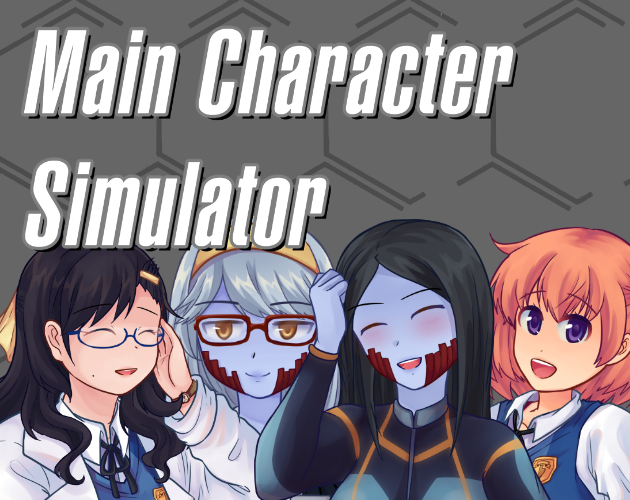
While the Main Character Simulator’s title kept me confused since I’ve first heard about it (I mean, that’s just another way of saying “a game”, isn’t it?), I was mostly expecting it to be some kind of meta-game with a lot of fourth-wall-breaking humour. What I’ve found, however, was a rather standard, het eroge VN (notably, the first one of this kind in NewWestGames’ catalogue), spiced up mostly by some “witty” inner monologues and comments from the protagonist. For the most part, stays focused on a brief, silly storyline about three teenagers finding a piece of alien technology and being chased around by its extraterrestrial owners, while also delivering a decent amount of very vanilla, nicely-drawn hentai scenes. Somewhat disappointingly, it’s even highly linear, up until very late into the game, when it split into three different romance endings (with two h-scenes for each of them). Thankfully it never gets tedious thanks to its relatively short length and the focus on reasonably funny gags.
If I have to point to something interesting about Main Character Simulator, it’d probably be unusual body types of some of the heroines – from my perspective, the slightly overweight Kiyoko and muscular Erodani were highly-welcomed pieces of visual variety in the usually very stale world of erotic EVNs. The game also includes some amusing pieces of partial voice acting, including a major character voiced by the VN-focused YouTuber Bosskwar – a person I’ve spent watching more than any other VN let’s player and I have to admit it was highly amusing to hear him in this role. Other than that, the game was simply… Fine, never surprising me the way I hoped it to do, but also not being a bad experience in any major way. And for the low price of $5, it should be a relatively safe buy for any eroge fan ut theere (and especially so when on sale).
Final Score: Recommended
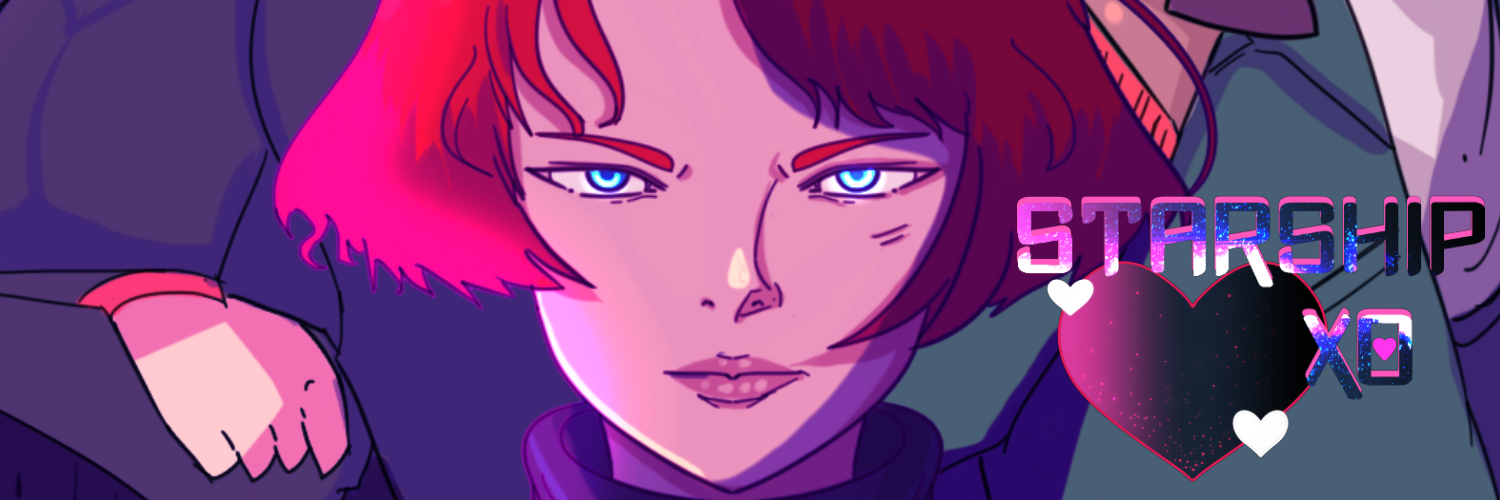
Starship XO is a game I covered briefly in my Yuri Game Jam 2018 overview and which I still consider as one of the strongest entries in last year’s event. While this story of a team of misfits being assigned a wreck-of-a-warship and sent to their deaths on the frontlines of a galactic war suffers from serious pacing issues, it’s genuinely fun to read and ultimately satisfying. Above everything else, this is the case because of the rather unique, appealing character art and the colourful personalities of the vast.
The game advances its plot at a neck-breaking speed, leading the 5-person team (including the protagonist and three romanceable heroines) from one near-hopeless battle to another and concluding after 2-3 hours (in a slightly overly-optimistic manner). The backstories of the crew and interactions between them are interesting and despite the short script, all of the girls end up having a lot of personality and charm, while also being believably flawed and troubled by their hopeless position. The plot explores LGBT+ issues a lot, both in the brief romantic arcs and the overarching plot, but also makes very decent use of its space-war setting and shows the crew banding together to win despite the overwhelming odds. While it could be easy to criticise for its narrative shortcuts and over-the-top victories of the crew, as a free game, it’s really just pleasant enough to justify its existance. The minor technical issues, like the distracting UI animations and occasional slow-downs, are slightly irritating at first, but can’t ever nullify the overall enjoyment factor of Starship XO – if you’re not afraid of queer characters and VNs explicitly discussing minority issues (without overdoing it), this one is really worth checking out.
Final Score: Recommended
And this concludes my coverage, for the time being, with literally every currently available NewWestGames title included. Approaching the latest games under the NWG label was quite an interesting experience, different from reading through and writing about the earlier ones, as most of these recent projects were to some extent experimental, escaping the formula of typical yuri eroge. They offered interesting ideas and often included important messages, even if their production quality was still inconsistent. While to be perfectly honest, after first encountering Katie’s work in the form of Sweet Volley High I was completely put off by it, now I’m genuinely interested in what the future VN’s of hers will look like. And as we’ve got all this out of the way, I encourage you to check the interview I’ve done with Katie, talking about her games, inspirations and the future of the NewWestGames label.

Plk_Lesiak: Welcome and thank you for agreeing to this interview! Before we get to our main topic, would you like to say hello to our readers and tell a bit about yourself?
Katie: Hello, I'm Katie. I'm 33, live in Canada and I'm the owner of NewWestGames. Definitely a Jill of all trades, master of none sort of woman, I've done little bits of everything on the games I've produced, to varying degrees and varying results!
PL: You saw both the Shovelware Adventures episode and my coverage of your more-recent games. Are there things in my articles that you would like to address directly?
K: I did indeed read your articles, and I enjoyed your in-depth looks. Though I'm not sure there's anything specific to respond to in the articles (without writing 10,000 words) I'd like to state that my journey in game development has been one of learning.
Sometimes, in games like Sweet Volley High, for example, hindsight has shown that although I was on the right track with the concept, some of the characterization, the overall shock value and plotlines, the execution fell short in many ways, as you quite rightfully pointed out. I just hope people can still enjoy these stories, despite the flaws.
PL: Before, before we talk about specific projects of yours, let’s tackle VNs in general. What motivated you to work on creating your own visual novel?
K: I think I wanted to create more specific experiences. The human race is a diverse group, and I wanted to make experiences that were more relatable to people, where they could really see themselves in the characters, or get into relationships with the sort of people they are attracted to. It's an ongoing journey, and I plan for even more inclusion in the future.
PL: Are there any yuri titles or creators you’d consider major inspiration for your games?
K: As far as inspiration goes, I've played VNs for years, from the old classics like Season of Sakura, to more modern titles. Though I love Kindred Spirits on the Roof, Saya no Uta, the Grisaia games, and more, one of my biggest influences is actually Love Plus on the DS. More a dating sim than a VN in the first half, it really gets you connected to your date of choice, going not just through the introductory flirting, but through the real relationship part too. It was that part I really connected with.
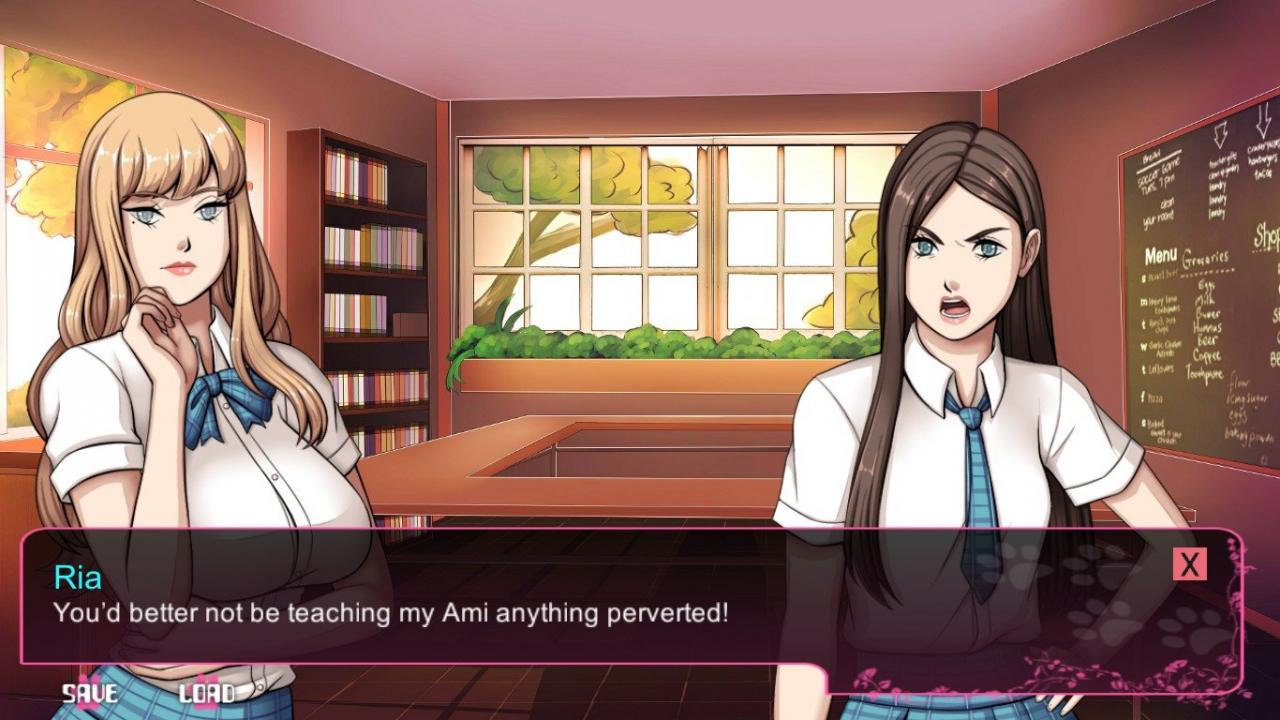
A Wild Catgirl Appears!
PL: Are you reading many VNs nowadays? Are they more often Japanese titles, or EVNs?
K: I try and read when I have time. It's probably a fair share of both JVN and EVN, just to keep a good mix of things. I'm currently reading Cursed Sight by InvertMouse and I'm enjoying it so far!
PL: And to the main topic! Your debut title, A Wild Catgirl Appears, was a rather controversial one. What kind of feedback did you receive when it first came out and what do you think about that project today?
K: AWCA was originally designed as a side project to a game I was developing at the time, Impulse!. The game was a nightmare at launch, making the front page of Steam, but ultimately being horrible. It was a huge lesson for me. I ended up remaking the game entirely, and even have plans to completely remaster it, alongside some other exciting stuff. For all of its faults, of which there are many, people still really connect with some of the characters, and that gives me a lot of hope for the future.
PL: AWCA was also your first Yuri Game Jam entry. Were you aiming for the event from the beginning and what motivated you to participate in the Jam in later years?
K: Yes, it was definitely planned as a Yuri Jam game. Though Impulse! was in development, it was an exciting event (in its first year, if I remember rightly) and I was really happy to make something for it! I did take time off from participating after that, but Starship XO was my way of showing improvement to the community and providing a fun story for people to read through for free, while highlighting the wonderful artists who'd helped work on it. I think the jam is a great way for creators to get noticed, and I know others have seen a lot of success from participating.
PL: As you've mentioned Impulse! twice already, while I was trying to complete your catalogue before this interview, I’ve noticed that this particular title became pretty much impossible to find, despite originally being a freeware release. What happened?
K: Impulse!, now there's a game. Originally released on Steam for $15, it was a 4-ish hour VN featuring full voice acting, a boatload of CGs, animated character sprites and more. It was a murder mystery surrounding an indie rock band, who had to find their own justice and work out why their friends were dying. Sounds great, right?
There were huge issues, however, from extremely inconsistent voice acting, a buggy engine (which plagued Catgirl, too), to poor plot pacing, bad writing and foreshadowing, some inconsistency with art – just real structural issues. I eventually took the step of withdrawing the game from sale. I do plan to re-use some of the characters one day, as I still really love the designs.

Impulse!
PL: After this project came games such as Sweet Volley High and probably your most highest rated VN, Ecchi Sketch, but it’s pretty safe to say most of them received mixed receptions. Is there a project of yours that you are especially fond of, or one you’d clearly consider your best work so far?
K: Mixed receptions is a good way to put it. Both games had their flaws, but many positives as well. Though some pacing issues existed in Sweet Volley High, I really liked the overall story, but I could've perhaps done a better job with how I marketed the game, where the plot twists left a bitter taste for some who were maybe expecting a happier adventure. But Ecchi Sketch is something I'm proud of. Again, not perfect, but it's nice to see that people really did enjoy the game. Definitely the most proud of that one.
PL: You focused exclusively on yuri in the past, but lately made a shot at creating het eroge with Main Character Simulator. What was your experience when working on this title and are you planning on approaching other genres in the future?
K: I wondered whether it would be worth trying a light-hearted, more nukige-aligned title for straight people, but giving them an option in terms of dateable characters. Kiyoko, in particular, was designed to feature the sort of women that aren't typically seen in VNs, and she received good feedback overall. Though I think the end product turned out okay, I felt my passion for the project wane throughout development. It ended up being a rather different story from what was imagined (which was actually inspired by a viewer of Bosskwar and the Weebathon in one of his Twitch streams, who eventually lent his voice to the game).
I certainly will be sticking to what I know in the future – games aimed at a female market.
PL: When you say "games aimed at female market", what does that mean to you? After all, yuri VNs, especially erotic ones, are also commonly enjoyed by men.
K: So, if men can get something out of my games, awesome, I'm glad. When I say aimed at a female market, I mean relying less on the tropes that most yuri games seem to rely on – unrealistic depictions of sex between women, schoolgirls, cliched romance - and instead adopt things I know women are looking for in their stories, namely more contemporary settings, more realistic and adult characters, and sex scenes that line up with their expectations.
I could talk about this particular topic all day, but I know there's an audience out there for this type of content. When I get the formula and the experience right, I know I'll find success there. Until then, I'll continue improving my craft.

Queerly Just Friends
PL: In my initial review of Sweet Volley High, I made a wrong assumption that the story was written by a guy and attributed much of the protagonist’s characterisation to that fact. I’ve later seen similar opinions from female reviewers, notably in Lady Storyteller’s review of AWCA. Do you think there’s something in your writing style that could prompt these kinds of reactions?
K: I think my writing on AWCA was rather inexperienced – it was my first time writing a game after all. I've had no formal writing training, my training has been writing scripts for games. I think I often struggled with conveying the voice of my characters, which may have made them come across differently than intended. I think as time has gone on, this aspect of my writing has improved dramatically, through practice and training.
PL: You’re now working on Queerly Just Friends, which seems like one of your most ambitious projects to date. Can you tell us a bit about it?
K: I sure can! Queerly Just Friends is a story very loosely based on some real-life experiences of my self and others. It's about the blurred lines that can occur when you consider a sort of 'friends with benefits' relationship, and what happens when one of the people involved catches feelings. It also explores what happens with relationship dynamics in a close-knit social group. The game will be featuring animated characters, full voice-overs, gorgeous hand-drawn art and some interactive, online connected elements too. I'm taking my time with it, and it won't be released until it's perfect, even if it takes me another year!
PL: Is there anything you would like to tell our readers before we wrap up?
K: To those who have played my games, thank you. You enabled me to do what I love. Through your feedback, you've encouraged me to improve. To people who haven't played them, I recommend either Sweet Volley High or Ecchi Sketch as a way to jump in. I'm still really proud of those games. And, thanks of course to you for inviting me to this little discussion, and encouraging me to improve as well!
PL: Thank you for your time!








